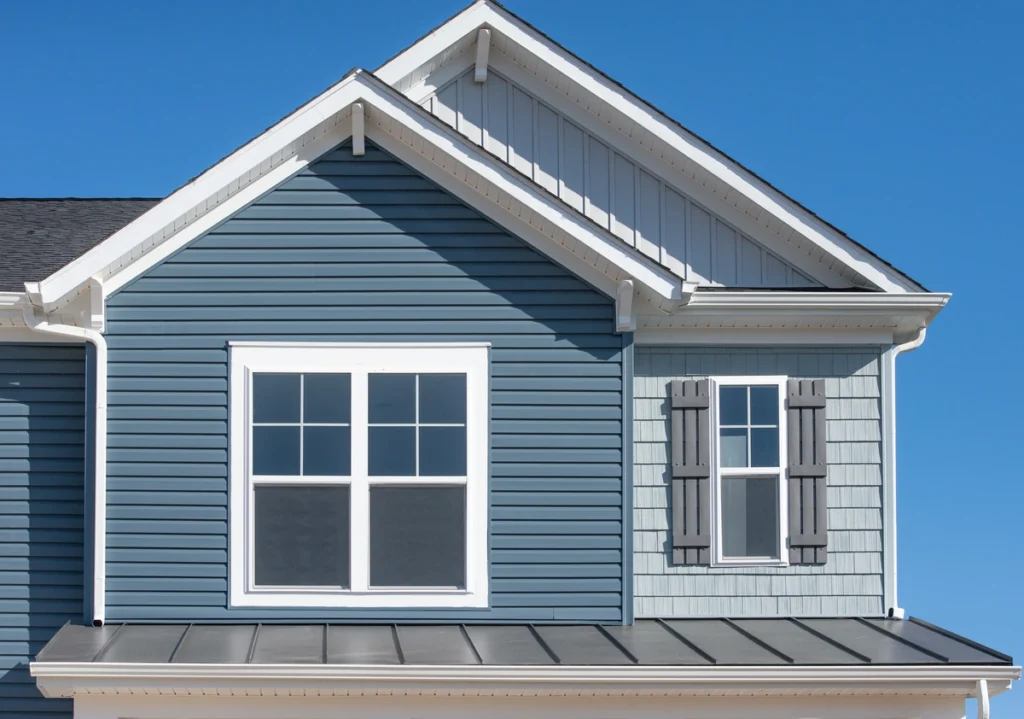Investing in siding replacement is a significant decision for any homeowner. It not only impacts the aesthetic appeal of your home but also affects its overall durability and energy efficiency. In this blog post, we’ll help answer the question, “How much does siding replacement cost?” and explore various factors that influence the cost of siding replacement, providing you with valuable insights and practical tips to help you make informed decisions. Here’s what we’ll cover:
- Understanding Siding Replacement
- 6 Cost Factors to Replace Your Home’s Siding
- Common Mistakes to Avoid
- DIY vs. Professional Installation
- Financing Your Siding Project
- Maintenance Tips for Long-lasting Siding
🤔 Understanding Siding Replacement
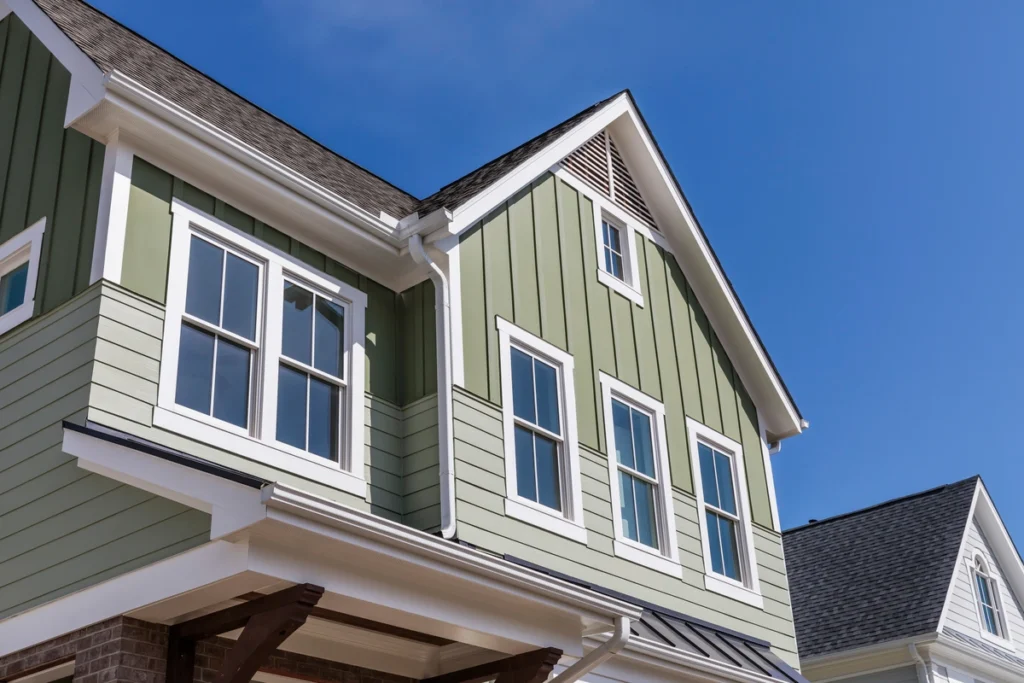
Siding replacement involves removing the existing siding of your home and installing new material to better protect your house against the elements. This process not only improves the appearance of your home but also enhances its energy efficiency and increases its market value.
Homeowners often undertake siding replacement to address damage from weather, pests, or age. It’s essential to understand the various components involved in siding replacement to budget accurately and choose the best options for your needs. Taking the time to research and plan your siding replacement can save money and ensure a successful outcome.
Understanding the intricacies of siding replacement allows homeowners to make informed choices about materials, labor, and additional features, leading to a more satisfying project.
Benefits of Upgrading Your Siding
Investing in new siding offers several benefits beyond aesthetic appeal. Enhanced energy efficiency, improved durability, and increased property value are just a few advantages:
- Better Insulation: Reduces energy costs by keeping your home warmer in winter and cooler in summer.
- Durability: Modern materials withstand harsh weather conditions, protecting your home from damage and minimizing maintenance.
- Increased Curb Appeal: Makes your home more attractive to potential buyers, boosting its market value.
These benefits highlight the importance of considering siding replacement as a valuable long-term investment.
💵 6 Cost Factors to Replace Your Home’s Siding
Understanding the cost factors in siding replacement helps homeowners budget effectively and set realistic expectations for their project. Here are some key considerations:
1. Material Costs
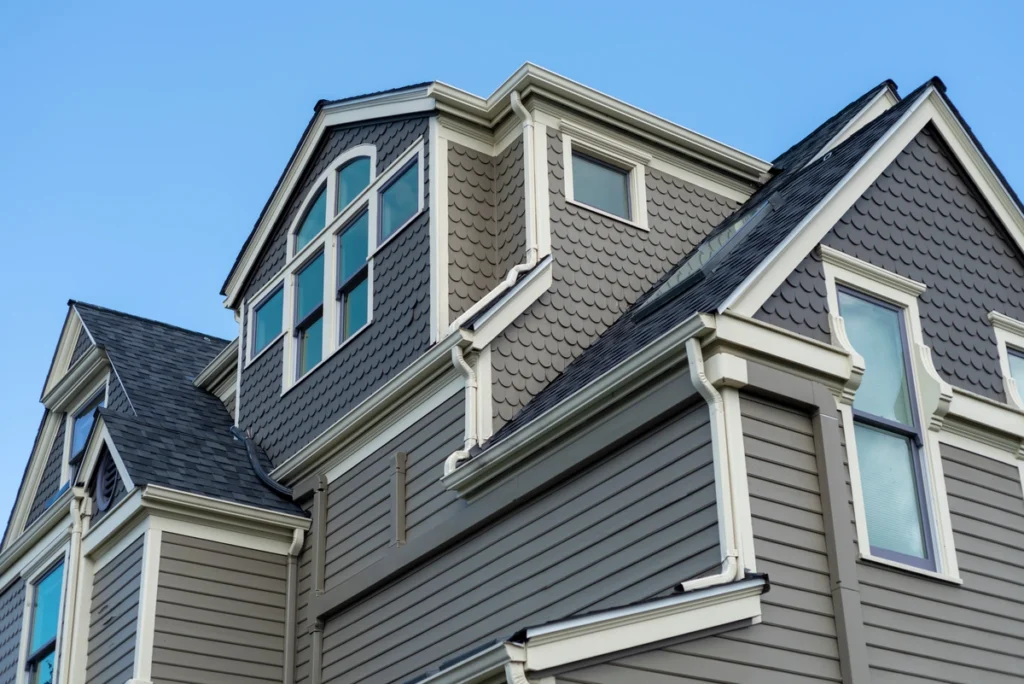
The choice of siding material significantly influences the overall cost. Vinyl tends to be the most affordable, while wood and fiber cement are pricier.
Types of Siding Materials
Selecting the right material is a critical aspect of siding replacement. Each type of siding material has its unique benefits and price points, catering to different aesthetic preferences and functional needs.
- Vinyl Siding: Known for its durability and low maintenance, vinyl siding is one of the most popular choices, averaging $3 to $7 per square foot. It comes in a variety of colors and styles, making it easy to match your home’s architecture.
- Wood Siding: Offers a classic, natural look, but requires regular maintenance to prevent rot and insect damage. It’s typically more expensive than vinyl, averaging $6 to $12 per square foot.
- Fiber Cement Siding: Combines durability with aesthetic appeal, resembling wood without the high maintenance. It averages $5 to $10 per square foot, is fire-resistant, and ideal for harsh climates.
- Metal Siding: Provides a sleek, modern look and is highly resistant to weather conditions. Aluminum and steel are common options, each averaging $7 to $12 per square foot, offering distinct benefits.
Choosing the right siding material requires weighing costs, durability, and appearance to align with your home’s needs and your personal style.
2. Labor Expenses
Hiring professionals for installation ensures high-quality workmanship, but it comes with added labor costs that can significantly impact your overall budget. Typically, labor expenses for siding replacement can range from $2 to $6 per square foot, depending on various factors such as the type of siding, the complexity of the job, and the region you’re in. For an average home, this can total anywhere from $1,000 to $5,000 or more.
While DIY installation can save you money on labor, it may lack the precision and expertise that experienced contractors bring to the table. Mistakes made during a DIY project can lead to further expenses down the line, particularly if issues arise that require professional intervention. Therefore, weighing the cost savings of doing it yourself against the potential risks and benefits of hiring a professional is crucial for making an informed decision.
3. Home Size and Design
The size and design of a home play a significant role in determining the costs associated with siding replacement. Larger homes require more materials, which directly increases costs. For instance, a typical small to medium-sized home might need around 1,500 to 2,500 square feet of siding, while a larger home could require 3,000 square feet or more. This difference in square footage can result in a substantial increase in material costs, potentially ranging from $5,000 to $15,000 or more, depending on the type of siding selected.
Additionally, homes with complex architectural features, such as multiple gables, intricate trim work, or varying wall heights, can complicate the siding replacement process, leading to higher labor costs. Skilled labor is often necessary to navigate these design elements, which can further inflate the overall project budget. For example, a home with a straightforward design might see labor costs around $1,500 to $3,000, while a more intricate design could easily push these costs to $4,000 or more.
Moreover, the choice of siding material can also be influenced by the home’s design. Certain materials may be better suited for specific architectural styles, which can affect overall costs. When considering siding replacement, it’s essential for homeowners to factor in how their home’s size and design will impact both material and labor expenses to ensure a well-informed budget and a successful outcome.
4. Removal and Disposal
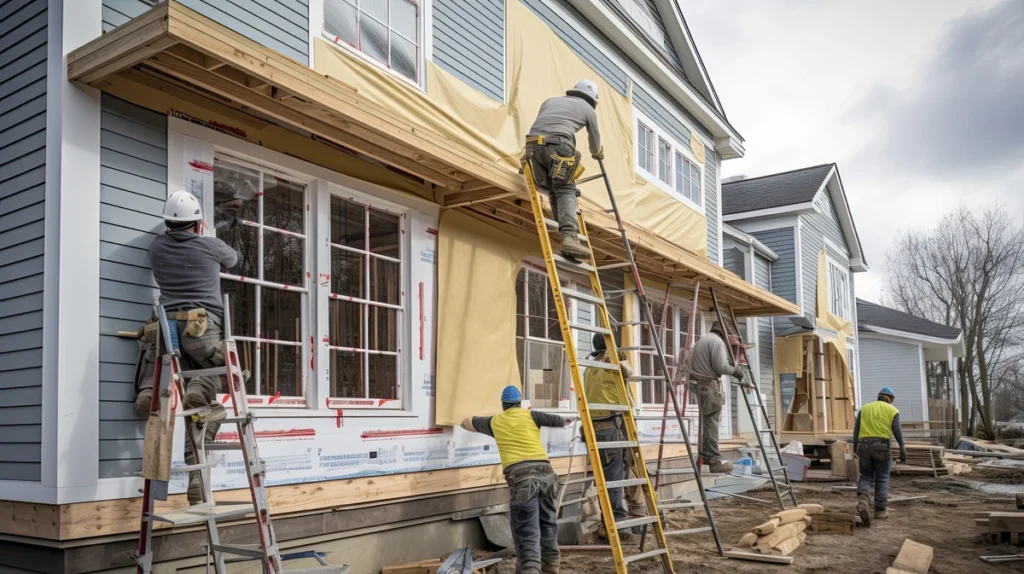
Removing old siding and ensuring its proper disposal can significantly impact the overall costs of a siding replacement project. The type of material being removed plays a crucial role in determining both the complexity and expense of the removal process. For instance, if the old siding is made from hazardous materials like asbestos, specialized removal techniques must be employed, often requiring the hiring of licensed professionals who can safely handle these substances. This can lead to increased labor costs and the need for additional safety equipment and permits.
Moreover, the disposal of old siding materials involves not only transportation costs but also potential fees associated with disposal at designated facilities. If the siding contains recyclable materials, there may be some cost savings available through recycling programs. However, if the materials are deemed non-recyclable, the costs can escalate due to landfill fees.
Additionally, the time taken for removal and disposal can prolong the project timeline, which might lead to further costs in terms of labor and project management. Therefore, it’s crucial for homeowners to budget for these factors when planning a siding replacement, as the expenses for removal and disposal can add a significant amount to the overall project cost.
5. Additional Features
When considering siding replacement, incorporating additional features such as insulation, custom trims, or architectural details can significantly impact overall costs, but they also offer substantial benefits.
Insulation, for instance, enhances energy efficiency by providing better temperature regulation within the home. This not only helps in reducing heating and cooling costs over time but also improves the comfort level inside the house. However, adding insulation may increase the initial investment, depending on the materials used and the extent of installation.
Custom trims and architectural details, like decorative moldings or enhanced corner boards, can elevate the aesthetic appeal of your home. These features allow for personalization and can complement the overall design of your property, ultimately boosting its market value. While these upgrades can add to the cost of siding replacement, they often yield a strong return on investment by increasing curb appeal.
Moreover, when planning for siding replacement, it’s essential to consider the long-term benefits of these additional features. Investing in quality materials and thoughtful design choices can lead to lower maintenance costs and improved energy efficiency, making it a worthwhile expenditure in the long run.
6. Regional Pricing Variations
The cost of siding replacement can vary significantly based on geographic location. Factors such as climate, local labor rates, and material availability all influence regional pricing.
In areas with harsh weather conditions, siding materials that offer superior durability and insulation might be more expensive due to demand. Conversely, milder climates may see lower costs for similar materials.
Local building codes and permit requirements can also impact pricing, as these regulations may necessitate specific materials or installation techniques that raise costs.
Understanding regional pricing variations allows homeowners to accurately budget for siding replacement and make informed choices that suit their specific environmental and regulatory needs.
🚫 Common Mistakes to Avoid
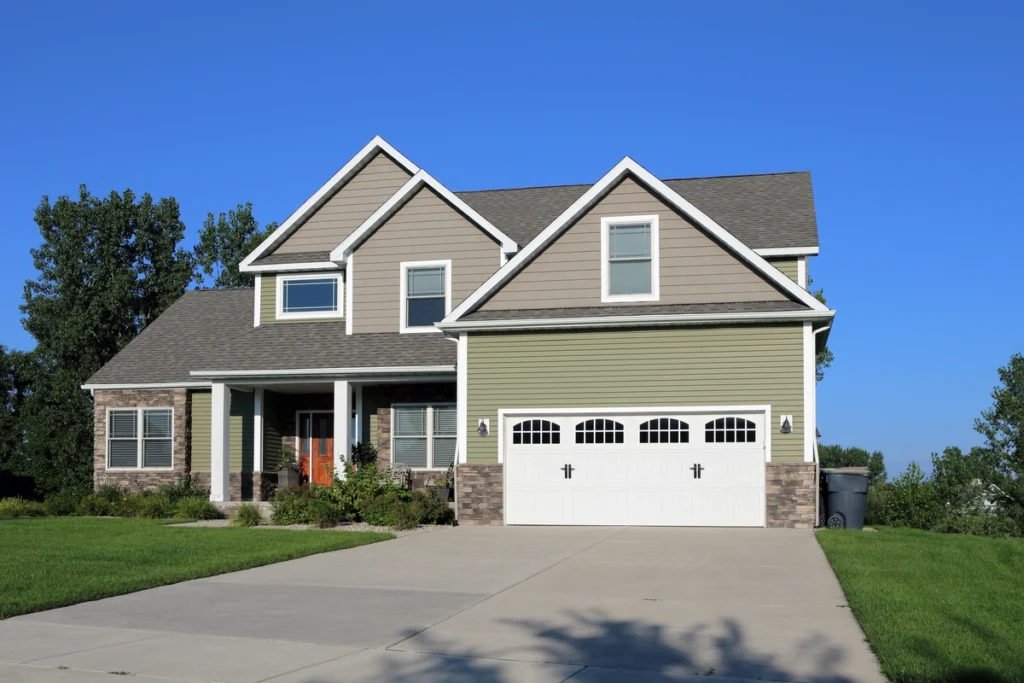
When planning a siding replacement project, homeowners should be aware of common pitfalls that can lead to dissatisfaction or increased costs:
- Underestimating Costs: Failing to account for all expenses, such as permits, disposal, and unexpected repairs, can result in budget overruns.
- Overlooking Maintenance Needs: Choosing a material without considering its maintenance requirements can lead to increased upkeep costs and reduced longevity.
- Neglecting Insulation: Focusing solely on aesthetics may cause homeowners to overlook the benefits of adding insulation, which can improve energy efficiency and comfort.
Avoiding these mistakes ensures a smoother siding replacement process and maximizes the return on your investment.
👨🔧 DIY vs. Professional Installation
When it comes to siding replacement, homeowners often face the decision between DIY installation and hiring professionals. Each option has its pros and cons.
DIY Installation: Offers cost savings and a sense of accomplishment for handy homeowners. However, it requires a significant time investment and can result in costly mistakes if not done correctly.
Professional Installation: Ensures precise and efficient work, reducing the risk of errors and potential damage. While more expensive, it provides peace of mind and often includes warranties for added protection.
Considering the complexity of siding replacement, many homeowners find that professional installation offers the best balance of quality and convenience.
How to Choose the Right Contractor
Selecting the right contractor for your siding replacement project is crucial to achieving the desired results. Here are some tips to help you make the right choice:
- Research and Recommendations: Start by researching local contractors and asking for recommendations from friends or family who have had similar work done.
- Check Credentials: Ensure the contractor is licensed, insured, and experienced in siding installation. Look for affiliations with industry organizations as a mark of professionalism.
- Request Multiple Quotes: Obtain detailed quotes from several contractors to compare prices and services. Be wary of significantly lower bids, as they may indicate subpar materials or workmanship.
Taking these steps will help you find a reliable contractor who can deliver quality siding replacement services within your budget.
🏦 Financing Your Siding Project
Siding replacement is a significant investment, and financing options can help make it more manageable. Here are some common ways to finance your project:
Home Equity Loans: These loans allow you to leverage the equity you’ve built in your home, providing a lump sum to cover your siding replacement costs. Typically, they come with lower interest rates compared to credit cards, and the interest may be tax-deductible, making this a cost-effective option for many homeowners.
Personal Loans: Unsecured personal loans can be a great choice if you prefer not to use your home as collateral. They offer the flexibility to borrow what you need and pay it back over time, often with fixed monthly payments. This option allows for quick access to funds, which can be especially helpful if you need to start your project immediately.
Contractor Financing: Many contractors understand the financial burden of a siding project and offer in-house financing options. This can include payment plans tailored to your budget or partnerships with financial institutions that allow for flexible payment terms. Working directly with your contractor can simplify the financing process and may provide additional incentives or savings.
Exploring these financing options allows homeowners to choose the best solution for their budget and financial situation, ensuring that your siding project is not only beautiful but also financially manageable.
💡 Maintenance Tips for Long-lasting Siding
Proper maintenance is essential to prolonging the life of your siding and keeping it looking its best. Here are some maintenance tips to follow:
- Regular Cleaning: Periodically wash your siding with a gentle detergent and water to remove dirt, mold, and mildew. Avoid using high-pressure washers, as they can damage certain materials.
- Inspect for Damage: Conduct regular inspections to identify any signs of damage, such as cracks, warping, or loose panels. Addressing issues promptly prevents further deterioration and costly repairs.
- Repaint or Stain as Needed: For wood siding, apply a fresh coat of paint or stain every few years to protect it from moisture and UV damage.
Following these maintenance practices will help ensure your siding remains in excellent condition for years to come.
🙌 Transform Your Home with Expert Siding Replacement Solutions
Understanding the costs and nuances of siding replacement empowers homeowners to make informed decisions that enhance their home’s value and efficiency. At Lions Siding and Roofing Experts, we take pride in offering comprehensive, tailored solutions that meet both your budget and aesthetic desires. Our team of experienced professionals uses only top-quality materials and provides unmatched craftsmanship, ensuring that your home is protected and looks its best for years to come. Trust us to guide you through every step of your siding replacement journey with transparency and expertise. Ready to transform your home? Contact us today for a free consultation and find out why Lions Siding and Roofing Experts are the team you can rely on for all your roofing and siding needs.

